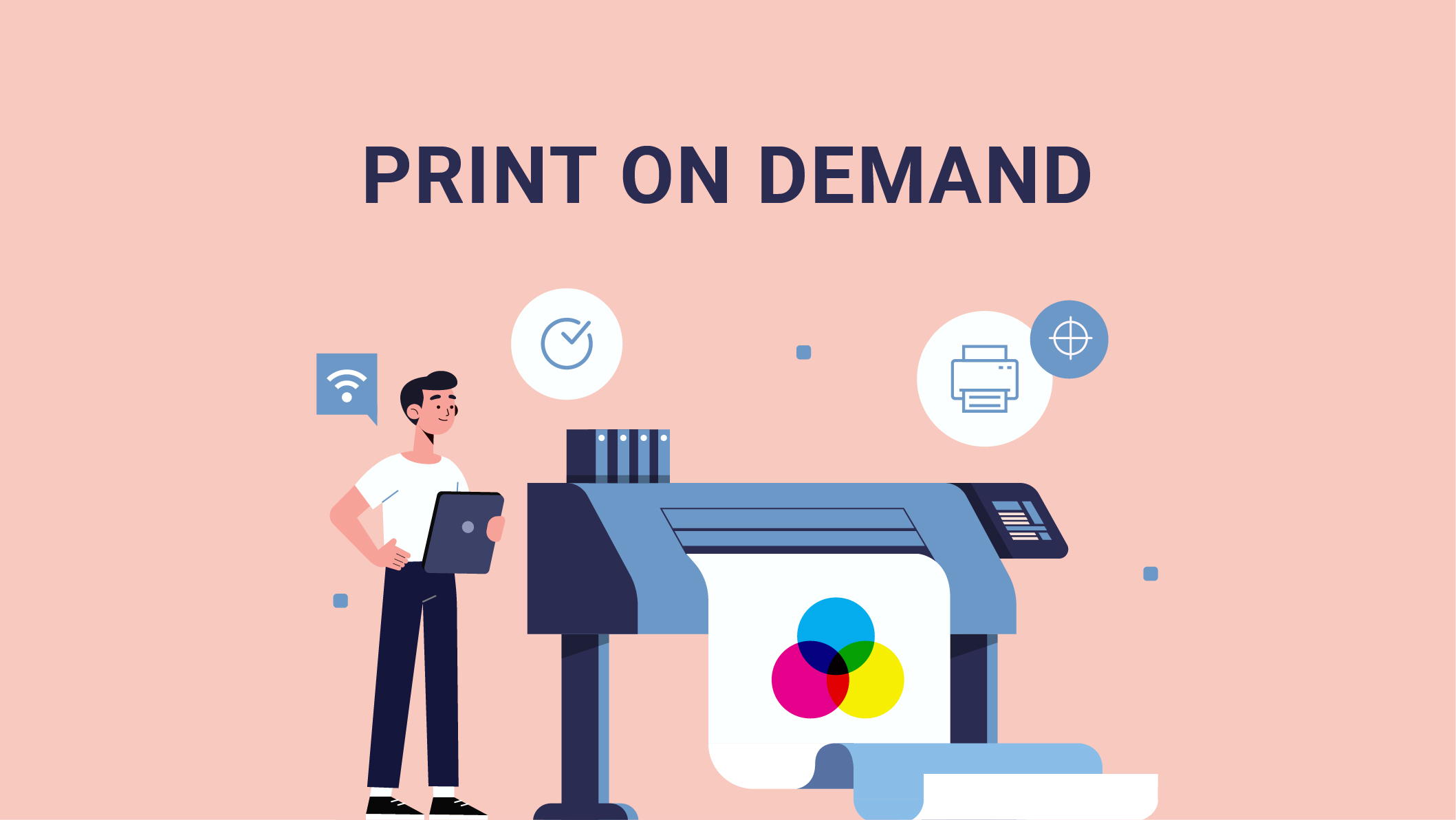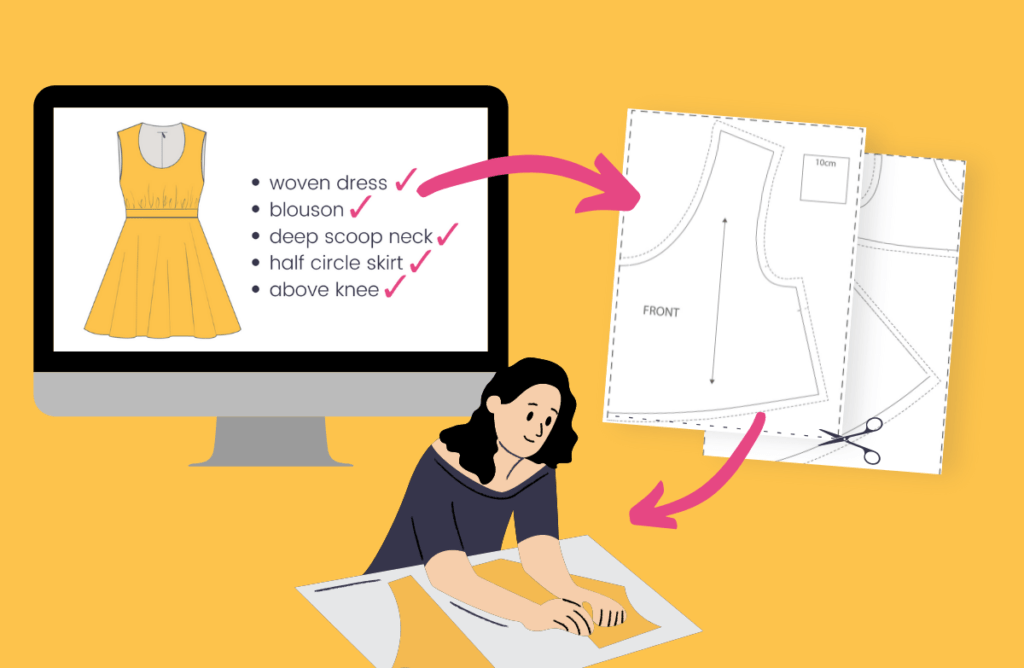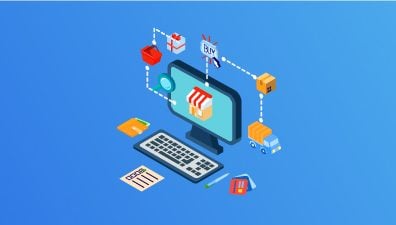Starting a clothing business demands a passion for fashion and a solid eCommerce business plan. For those interested in entering the fashion industry, this blog will provide templates and examples of effective fashion eCommerce business plan.
The fashion eCommerce market is saturated with both offline and online stores, making entry easy but competition fierce. Due to the low costs of starting an eCommerce venture, expect increased competition in the future. There’s also a risk of employees or contractors launching rival businesses.
The emergence of such competitors could negatively affect us. They might adapt faster to fashion trends or offer enhanced eCommerce services, including innovative marketing, pricing, or promotions, all of which should be considered in a fashion eCommerce business plan.
Table of Contents
- What Is a Fashion eCommerce Business Plan?
- How to Determine Your eCommerce Business Plan?
- How to Create a Fashion eCommerce Business Plan for Your Store?
- Executive Summary
- Business Description
- Market Analysis and Choose Your Niche
- Business Structure
- Choose Your Fashion Store Products
- Determine Your Fashion eCommerce Business Plan
- Select Your eCommerce Platform
- Fashion Marketing Strategy and Plan
- Operations and Management
- Financial Projections and Funding Request
- Some Models to Assist You with Creating a Fashion eCommerce Business Plan
What Is a Fashion eCommerce Business Plan?
A business plan is a guideline portraying a business, its products or services, how it receives (or will receive) money, its leadership and employment, its financial status, its operations model, and numerous different details fundamental to its success.
This is something other than mental notes. A good eCommerce business plan takes your ideas, questions, and concerns and sets those up as a written record.
As you begin making your business plan, you will before long comprehend that it is over one single piece of paper with handwritten subtleties on it. It is a plainly developed format of how your business will be made, how it will work, and what you expect the future holds as far as an effective fashion eCommerce business.
At the point when you are creating a multi-vendor eCommerce business plan, ensure that you have targeted customers bearing in mind. Is it true that you will search for financial investors or put a Kickstarter mission and utilize this as your descriptive stage?
Assuming this is the case, ensure that your business plan includes everything the customers would need to think about your business (and it is not limited!). Numerous customary funding solutions require a business plan to provide you with capital.
Nonetheless, there are other solutions, take Payability’s eCommerce business plan example that has practical experience in eCommerce and does not require credit checks, a business plan, or any complicated paperwork.
How to Determine Your eCommerce Business Plan?
At the very starting point of the planning stages, it is a smart viewpoint to foster a system for your business model. This eCommerce business plan template will keep on evolving as you make each part, so do not make progress toward an ideally completed plan on the primary attempt. You will make changes to the plan, certainly in progress.
There are numerous approaches to selling items online and distinctive business models to seek. The specific business model you follow will be one that bodes well with your resources, abilities, and interests.
To prepare for the best eCommerce business plan sample suitable for your items, you need to sort out the following questions:
- What are you selling? The fashion industry could include many different types of items, therefore, you need to focus on one group of products that you think would gain much revenue from the targeted customer that you have chosen.
- Who are you selling to? You need to make a decision whether you are selling to organizations, or corporations in the system of B2C or you choose a B2B eCommerce business plan.
- How are you sourcing your products? This step must be the logistic management of your resources, whether you manufacture in-house, or use a third-party manufacturer, dropshipping or wholesale. You need to come up with a detailed plan with the most optimal and convenient way to manage your item resources.
After going through these questions, it is time for you to dig deeper into how to write an eCommerce business plan and what needs to be included in a fashion eCommerce business plan with some eCommerce business practices in the next part of this blog.
How to Create a Fashion eCommerce Business Plan for Your Store?
A business plan serves as a blueprint detailing the core elements of a company, from its offerings and financial sources to its management, team structure, financial health, revenue strategies, Key Performance Indicators, and beyond. It’s a meticulously crafted guide that delineates the particulars of your online clothing venture and the objectives you aim to meet.
Even if you have a longstanding brick-and-mortar fashion store and are branching into the digital space, it’s essential to draft a distinct business plan tailored to your online clothing division. So, without further ado, here’s a breakdown of the steps eCommerce fashion business plan:
Executive Summary
The executive summary serves as a concise overview of your fashion eCommerce business plan, encapsulating the essence of your brand. Within this section, you’ll present vital details, including the business objectives, mission, the range of products offered, and the critical factors that will contribute to your brand’s success.
Consider the executive summary as your brand’s elevator pitch: a brief yet compelling presentation aimed at captivating a reader’s interest in just a short span of time.

Interestingly, even though the executive summary is placed at the forefront of your business plan, it’s advisable to draft it at the very end. This strategic sequence allows you to gain a holistic perspective of your entire business blueprint, ensuring that only the most pivotal and compelling information is highlighted in the summary.
Business Description
The business description provides a fundamental snapshot of your company. Within this section, you’ll outline the name of your brand, the variety of products you offer, and the specific audience or demographic you aim to serve.
Complementing the business description is the mission statement. This not only reflects the broader aspirations and objectives of your company but also emphasizes what differentiates you from others in the market. Your mission should resonate with potential customers, making it evident why they should opt for your brand over others.
In essence, both your business description and mission should collaboratively work to give shoppers compelling reasons to choose your eCommerce store over competing brands, ensuring they perceive value in the unique offerings and ethos of your fashion business.
Market Analysis and Choose Your Niche
When venturing into the fashion business, it’s essential to deeply understand the potential customers and their preferences. Your market analysis should encompass the estimated size of the customer base for your specific clothing niche, insights into prevailing buying trends, and a comprehensive profile of your target demographic.
In tandem with your market insights, undertake a SWOT analysis. This evaluation will shed light on the strengths and weaknesses inherent to your business while also highlighting external opportunities and threats.
Next, delve into a competitive analysis. Scrutinize the strengths and weaknesses of competitors in your sphere. Understand what gives your store an edge and strategize on how you can lure customers from established competitors. The insights gathered from this will lay the foundation for your marketing tactics.

Upon assimilating knowledge about the market and its key players, you’ll be poised to define your niche. Rather than attempting to cater to every segment, tailor your offerings based on your interests and overarching business vision.
When narrowing down your niche, consider these guiding principles:
- Uniqueness is Paramount: The world of eCommerce is saturated. To make a mark, your brand must offer something distinct, ensuring it stands out amidst the multitude.
- Passion Fuels Persistence: Opt for a niche that resonates with your personal preferences. Reflect on the clothing styles you adore, trends you wish were more prevalent, and products you’d enthusiastically recommend.
- Establish Authority and Add Value: Scan the market for gaps or unmet needs. If you possess expertise in a particular area, like sustainability or social causes, leverage it. For instance, you might introduce a line that supports fair trade practices or is linked to a social cause.
- Profitability Matters: While passion and uniqueness are crucial, ensure your chosen niche also presents ample monetary potential. Identify a unique value proposition that not only facilitates growth but also guarantees revenue.
Business Structure
Determining the appropriate business structure is fundamental for the effective operation and legal functioning of your venture. The choice of structure influences myriad facets, from your level of control and how profits are distributed, to potential liabilities and the manner in which taxes are paid. The selection you make will have enduring implications on the way your business is managed and how it grows.
Sole Proprietorship
This is the simplest form of business structure where one individual runs and owns the entire business. It offers full control to the owner but comes with the caveat that the individual bears all the business liabilities. This means that personal assets can be at risk in case of any business debts or lawsuits.
LLC (Limited Liability Company)
An increasingly popular choice for many, an LLC merges the benefits of both the corporation and sole proprietorship structures. The primary advantage is that it offers protection against personal liabilities. In essence, your personal assets are not at risk if your business faces any legal issues. Furthermore, profits and losses can be passed directly to the owner without corporate taxation.
Partnership
If you’re looking to run the business with another person or a group, a partnership might be the ideal choice. It involves shared responsibilities, liabilities, and profits among the partners. It’s essential, in this case, to have clear agreements outlining roles, profit distribution, and conflict resolution strategies.
Corporation
This is a more complex structure suitable for larger operations, offering the most protection against personal liabilities. It’s treated as a separate entity, meaning it pays its own taxes and the owners pay taxes on the salaries they earn from the corporation. The setting up process can be intricate, often necessitating more time, money, and comprehensive record-keeping.
Choose Your Fashion Store Products
The product lineup is the heartbeat of any fashion store. Here, you’ll detail the products you intend to offer and how they cater to the desires and preferences of your target audience. If your product range is expansive, a broad overview of product categories will suffice for this section.
Anticipate the future by mentioning any products you aim to introduce down the line. Moreover, emphasize any unique intellectual property, such as exclusive T-shirt designs or patented clothing technology, as these can provide a competitive edge and potentially elevate profit margins.
While product selection is paramount, consider the pulse of the current fashion industry. Stay attuned to evolving trends and shifts in consumer demand. The availability of certain products, especially if sourced globally, might also be a determining factor in your product choices.
In essence, your product selection should not only mirror current market demands but also anticipate future trends. By intertwining customer needs with strategic product choices, you position your brand for sustainable growth and success in the competitive world of fashion retail.
Determine Your Fashion eCommerce Business Plan
With a clear understanding of your niche and the desired product range, the next pivotal step is to decide on a suitable business model for your online fashion venture. This entails choosing how you’ll source or produce your products, whether that’s through a direct partnership with a clothing manufacturer, utilizing white labeling, or adopting a dropshipping strategy.

Online clothing ventures typically align with one of four primary business models:
- Print-on-Demand: Products are printed and shipped only when there’s demand.
- Custom Cut-and-Sew: Offering unique designs by customizing fabrics and creating individualized pieces.
- Private Label: Selling products produced by another company under your brand name.
- Dropshipping: Stocking products from third-party suppliers and shipping directly to customers without holding inventory.
Each model comes with distinct advantages and challenges. Your selection should harmonize with your overarching objectives for the fashion store, available resources, and budget. Additionally, your skillset, coupled with the capability or intent to onboard a team, will influence which model aligns best with your vision. We will delve deeper into each business model later in the next section.
Select Your eCommerce Platform
To establish a successful online storefront, choosing the right eCommerce platform is paramount. The market is replete with robust options that can underpin your online presence. However, before impulsively opting for the most cost-effective or easiest choice, reflect on these crucial considerations:
- Business Operation: Determine how hands-on you intend to be. Do you require extensive support, or would a more autonomous platform suffice?
- Technical Proficiency: Gauge your technical knowledge. Are you willing and able to engage in coding to tailor your site?
- Desired Features: List the essential features of your platform, such as email marketing capabilities, SEO tools, custom domains, or SSL certifications.
- Budget Constraints: Assess your financial capacity. Can you afford additional expenditures for themes, plugins, or other add-ons?

Broadly, eCommerce platforms can be categorized as open-source or SaaS (Software-as-a-Service).
Open-Source Platforms
These platforms offer a blank canvas approach, granting users full control over the source code. This means unparalleled customization potential – from individual product pages to checkout experiences. Magento, a prominent open-source platform, is renowned for its flexibility and scalability, catering to businesses of varied sizes.
However, this extensive customization also brings complexity. For intricate technical adjustments, expertise from certified web developers is advisable.
SaaS Platforms
SaaS solutions provide a more streamlined approach. Platforms like Shopify fall under this category, where users subscribe to the service maintained by a third-party provider. Instead of grappling with the intricacies of development, users can rent the software.
By investing in a subscription, they gain access to a plethora of pre-designed themes, templates, and add-ons, enabling them to shape their storefront with ease. Shopify, in particular, stands out for its user-friendly interface, comprehensive support system, and a vast array of plugins, making it an attractive choice for budding entrepreneurs and established businesses alike.
Fashion Marketing Strategy and Plan
Crafting a robust marketing and sales strategy is pivotal in connecting with prospective customers and drawing them to your offerings. It’s this strategy that serves as a bridge between your brand and its audience, facilitating awareness, engagement, and sales.

To thrive in the digital landscape, your eCommerce fashion marketing plan should be a cornerstone. Given that your website essentially stands in for a brick-and-mortar store, its importance cannot be overstated. Here’s a blueprint for an eCommerce marketing strategy tailored for your clothing business:
- Email Marketing: Leveraging email campaigns allows you to nurture leads, announce new collections, share promotions, and foster loyalty. Segment your audience to send personalized messages that resonate with individual preferences.
- Social Media: Platforms like Instagram, Pinterest, and Facebook are invaluable for clothing businesses. They not only provide a visual showcase for your products but also facilitate engagement through comments, shares, and direct messages.
- Search Engine Optimization (SEO): Ensure that your website ranks high on search engines. By optimizing your product descriptions, blog content, and meta tags, you’ll attract organic traffic from people searching for the products you offer.
- Website User Experience: Beyond mere marketing, the usability of your online boutique plays a paramount role in sales conversion. An intuitive, fast, and mobile-responsive website design is vital. If your site is cumbersome or lags, you risk potential customers abandoning their shopping carts. Streamline the browsing and checkout processes to offer a seamless shopping experience.
Operations and Management
Your operations plan delves into the nitty-gritty of how your business functions, offering insights into the intricate processes that ensure the smooth flow of products from inception to the hands of customers.
- Sourcing and Suppliers: Begin by detailing where and how you’ll acquire materials. Whether it’s local artisans, international manufacturers, or wholesale distributors, clearly outline your suppliers and the associated lead times for ordering stock.
- Inventory Management: Describe your approach to stock control. Will you adopt a just-in-time model, keeping minimal stock, or a bulk storage model? The method you select can have implications on cash flow and storage costs.
- Production Method: Shed light on your mode of obtaining products. Will you employ drop shipping, purchase inventory from wholesalers, or craft products from raw materials?
- Sales Channels: Highlight where and how sales will occur. Will transactions be solely through your website, or do you intend to leverage platforms like social media for direct sales?
- Payment Options: List the various payment methods you’ll accept, ensuring a range of options to cater to different customer preferences.
- Shipping and Delivery: Address the logistics of getting products to customers. Will you manage shipping internally, or collaborate with a third-party provider? It’s crucial to emphasize the significance of delivery options and speed. As per the 2022 Salsify Report, delivery considerations heavily influence purchase decisions, with 24% and 22% of U.S. shoppers basing their choices on delivery options and speed, respectively.
Financial Projections and Funding Request
Establishing a clothing business requires a thorough understanding of the financial landscape, both in terms of initial outlay and ongoing operational expenses. The scope of your financial needs will vary significantly depending on the chosen business model, be it dropshipping, cut-and-sew, graphic T-shirt printing, wholesale purchasing, custom clothing manufacturing, or venturing into second-hand sales.
- Startup Costs: Begin by enumerating the initial expenses necessary to launch your business. This encompasses costs related to inventory procurement, production processes, website establishment (including hosting and design fees), and any required equipment or software.
- Cost Classification: It’s vital to differentiate between costs. Specify which expenses are one-off initial investments and which will be ongoing or recurring. This provides clarity regarding future financial commitments.
- Projected Financial Statements: Delve into your anticipated financial performance by including projected profit and loss statements. This offers stakeholders a glimpse of your expected profitability. Additionally, detail your projected cash flow to ensure liquidity and financial health.
- Funding Request: Clearly outline your funding strategy. How do you plan to secure the necessary capital to kickstart and sustain your business? Common avenues include personal savings, contributions from friends or family, crowdfunding campaigns, and traditional bank loans. Be explicit about the amount required, the intended use for each portion, and any repayment terms if borrowing.
Some Models to Assist You with Creating a Fashion eCommerce Business Plan
After coming up with an overview of how to create an online eCommerce business plan, we will provide you with a list of the best eCommerce models for you to make a deep reference.
Print-on-demand
Print-on-demand is a modern eCommerce model that allows businesses to offer a wide array of products without maintaining a large inventory.
What is Print-on-demand?
Print-on-demand (POD) is a printing service that stems from the face of conventional wholesale. Your items are printed when you need them, rather than in mass manufacture before you need them – which means you need not bother with a lot of things to begin a fashion eCommerce business plan and develop your fashion store.
POD is another form of Dropshipping model because POD users will not have to worry about inventory management or shipping and delivery. In a nutshell, Dropshipping is when you connect with a supplier, and then post their product for sale, and only when a customer buys that product from your online store, do you need to create an order with the supplier provided to the supplier to deliver the product to the buyer.
This means that you do not need to own the product, nor are you responsible for its transportation, management, and storage. POD is similar but different in that you can submit designs that are self-created and specialized only for print.
Although it is no longer a strange thing in the Vietnamese market, not everyone understands and is right about this model. If you are looking to learn more about the eCommerce market or you are doing business in this market and want to expand into new areas, then these are probably the models that you need to know.
POD has effectively altered the book publishing industry, and with digital innovation preparing for photo-quality material printing, the fashion business is not far behind.
From a broader perspective, POD is also known as a dropshipping model, in which sellers do not have to deal with inventory management and shipping. All stages are handled by a third party and the seller does not incur the cost of storing the goods as they are not charged for the goods when an order is received.
How can Print-on-demand operate?
Certainly, to understand the whole process when applying the Print-on-demand (POD) model to the business, there is only one way to actually do it. However, here are some basic steps on how to run a business with a POD model to help you have a simple overview and understanding before making a decision:
Step 1: Create stores
The first step to starting that process is to build your own store. Depending on the Print-on-demand (POD) platform you use, you can get started right away in one of two ways:
- Integrated an existing store: Print-on-demand (POD) providers will help you connect to eCommerce platforms and online stores. If you already have an online store, you can integrate it with the POD platform you use and start your business right away.
- Using POD services available on eCommerce platforms: In case you do not own a store on any online shopping platform, choose for yourself a Print-on-demand (POD) service provider that allows you to personally create information on your platform and they will be sold as complete the products under your name.
Step 2: Upload the layout design and choose the products you want to sell
Once you have chosen the right Print-on-demand (POD) platform and have your own online store, the next step is to upload your designs and products to your store. If you use the POD fulfillment service, the choice of product type to sell is entirely up to you. You can sell any product you want, as long as the POD platform you use supports it.
For example, you plan your store to be an online shop selling T-shirts, so you just need to choose the right T-shirt products for sale. On the other hand, if you choose products such as cups, cloth bags, or even masks, you can do the same thing or sell many types at the same time. In general, since this is your store, everything is up to you.
Step 3: Sell your items
At this stage, your store is open to customers around the world and you have your product ready to go to print. If you are using fulfillment services, you can start marketing your products and drive more traffic to your store.
In case you use a Print-on-demand (POD) platform, the platform of your choice will do most of the marketing for you and you can still promote your store by sharing the link to the information page on the website or linking your product to customers. Either way, the ultimate goal should be to get people to find your products and pay to buy them.
With a team of over 50 Shopify Experts, Magenest has successfully completed 100+ projects and satisfied over 2000 customers worldwide. We specialize in services such as seamless platform migration, and data migration from various eCommerce platforms.
Custom Cut and Sew
The term cut and sew is utilized to indicate customization of clothing that has been tweaked from a crude texture instead of one that has been bought from a third-gathering provider and afterward screens printed or modified.
The term is common in the metropolitan style industry, where architects can either have a planning screen printed on pre-made customization of clothing, for example, a shirt or hoodie pullover, or have the whole customization of clothing made without any preparation.
In the last case, the fashioner of the realistic likewise assumed a part in the making of the piece of clothing itself. Cut and sew customizations of clothing are by and large of better caliber and cost than a standard mass-produced thing.
Cut and sew services are sewing project staff that you employ just to cut and sew your items. Everything they do is make your samples and mass-produce them. Some of the time they can make and print markers and pack and ship your items to customers, yet you will need to ask about this.
With a cut-and-sew process, you are answerable for sourcing and buying every one of the materials and getting them to the production line on time.
The procedure working with cut & sew manufacturing begins with you sending your tech pack, design, sew-by samples, and some sample yardage. The cut & sew would make a pre-production test so you can support the sewing quality thus you can give an accurate manufacturing cost. When the sample is approved and a cost is chosen, you will put in your production order the materials required for the order.
Private Label Clothing
Private label clothing refers to garments that are manufactured by one company but branded and sold under another company’s brand name.
What is private-label clothing?
Private label is included in a fashion eCommerce business plan where items, for this situation, clothing, are bought and branded under your own shop’s name. The brand that gives the clothing may give diverse levels of customization, in any case, there will not be a need to design the products without any preparation. The manufacturer is utilizing its own provisions to create the items yet then marking them with the purchasers’ own branding.
It is an engaging business plan since fostering a brand gives you weight as a seller, and your business can scale as your brand gets known and connected with the design of your clothing. It permits you to stand separated from non-branded products, a major benefit in a particularly jam-packed marketplace.
So, as mentioned above, private labeling includes the assembling of items by an organization, that are then sold by another under the seller’s image name. These items are frequently nonexclusive-style things that can be handily altered with brand logos and name labels.
During the assembling cycle, your image names are added, and the things become a piece of your organization’s image. Basically, this is the means by which huge business works, yet they frequently own and control the creation of industrial facilities. In private labeling, you are employing the services of another firm, which makes and conveys the garments to you.
Fostering a brand gives you weight as a seller, and your name gets known and connected with the plan of your articles of clothing. It empowers you to stand separated from non-marked products and conceivably implies that you can have your individual plans purchased for life.
A few retailers sell outsider lines and have their own reach, which normally expands possible deals as you are offering a more extensive assortment, and not every person likes to possess large label garments for different reasons.
The benefit of private label clothing in the fashion retail industry
There are many advantages of private labeling, which is obviously why the allure is there. A marked thing will consistently sell for more cash than a nonexclusive non-named piece, regardless of whether your image is noteworthy. In the event that you retail outsider products, you will discover they are still very costly to buy, in any event, for wholesalers so when you sell on the markup is marginalized.
With private label items, whenever you have paid the assembling costs, the rack costs are for you to choose and you will discover commonly this is a more critical net revenue. Marking is a tremendous advantage, it gives you a personality and degree for development. All brands needed to begin little, however the ones that end up at the top have frequently utilized private naming strategies in the beginning phases.
Dropshipping
Outsourcing clothing permits you to sell on-trend clothes to your clients in an ideal fashion style. At the point when you wholesale clothes, you risk missing out on the trend by not requesting inventory on time. With outsourcing, it can be easy to add and eliminate items from your store. It additionally permits you to eliminate low-performing fashion styles with no expense to your business.
At the point when you wholesale clothes, purchasing some unsuitable styles or inventory can prevent you without regard to styling clothing that will not sell. When dropshipping clothes, you can add new things and sell them around the same time putting you ahead of clothing wholesalers. Those are the benefits of choosing dropshipping as one of the factors to enhance your fashion business.
Final Thoughts
Carefully planning is a significant step to get your eCommerce business from the preparation stage to the dispatch stage and to guarantee its fruitful results in the future.
Going through the examples and templates of composing a fashion eCommerce business plan will solidify your own comprehension of your business and your market. It will likewise position you to make the most of rewarding opportunities while relieving destructive dangers to your business down the line. If you need any help, don’t hesitate to contact directly to our eCommerce experts.
















